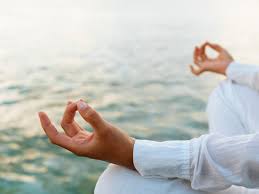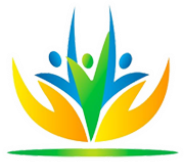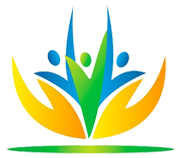 The Soul of Yoga - "Without self-knowledge we cannot go beyond the mind" Jiddah Krishnamutri Yoga has fast become a buzz word in Western society, over the last few years becoming known as a powerful way to enliven physical well-being. This has been highlighted even further with yoga’s integration within the field of popular sports and its practice by well-known personalities. I teach the style of Dru, also known as the yoga of the Heart. The word Dru comes from the Sanskirt word Dhruva which relates to stillness, the still point which can be experienced within this practice. The roots of Dru are in Hatha Yoga where movement is flowing in sync with the breath. The soft flowing movements, controlled breathing, visualisations and affirmations make Dru a tremendously potent form of stress release.
The word Yoga means Union-the Union of the Mind, Body and Spirit. The practice is believed to be four thousand years old as for centuries the wisdom and knowledge was passed down from the Rishis (teachers) in the oral tradition and its ethos has not change, the only development coming mainly in the west with the introduction of several hybrid forms. Many associate the modern day images of Yoga with difficult postures which appear impossible to attain for the average person. One may feel that "I am not flexible enough to do Yoga" whereas one does Yoga to become flexible, not just in the physical body but on all levels of being. I feel that it is these levels of Being that we have some-how lost touch with, as modern life is so focused on material objects and the physical appearance without an understanding and knowledge of how amazing our bodies actually are. Many people tend to look outside of themselves for solutions to their problems when the answer always lies deep inside. We have mental, emotional, physical and spiritual layers of being. In fact Yoga is about the mind, the journey of oneself through the following of the first text scriptures written 2500 years ago by the scholar Patanjali , famously known as The Eight limbs of Yoga. These are: Rules of social behaviour, Rules of personal behaviour, Physical postures, Breathing, Withdrawal from the senses, Concentration, Meditation, Pure consciousness. By working through these eight structures of yoga one can create a self-awareness where one works towards finding an inner peace amidst of the disruptions and suffering being human inevitably brings. Now one can see how the physical postures are just one small part of a greater stress release system. The physical postures literally squeeze out the stress that resides in the joints, muscles and organs of the body. The philosophy of Yoga can be a life-long study, the most important aspect is to give yourself the time to experience the flow of Yoga without judgement. It's about YOU, there is no competition, no right or wrong. Work beyond the desire to achieve perfect postures, work beyond the ego. Allow yourself to loosen the trappings of your own mind. Allow yourself to be free. Alison Metcalfe
0 Comments
Leave a Reply. |
The Holistic Life CoachHolistic & Natural Solutions for Health and Wellbeing Categories
All
Archives
March 2018
|
COOKIE POLICYWe use cookies on this site to help us improve your experience. If you wish to understand fully how we use these, click through for our 'cookie policy'.
PRIVACY POLICY |
disclaimerAll material on this website is provided for your information only and may not be construed as medical advice or instruction. |
Contact UsSubscribeJoin our mailing list today!
|


 RSS Feed
RSS Feed